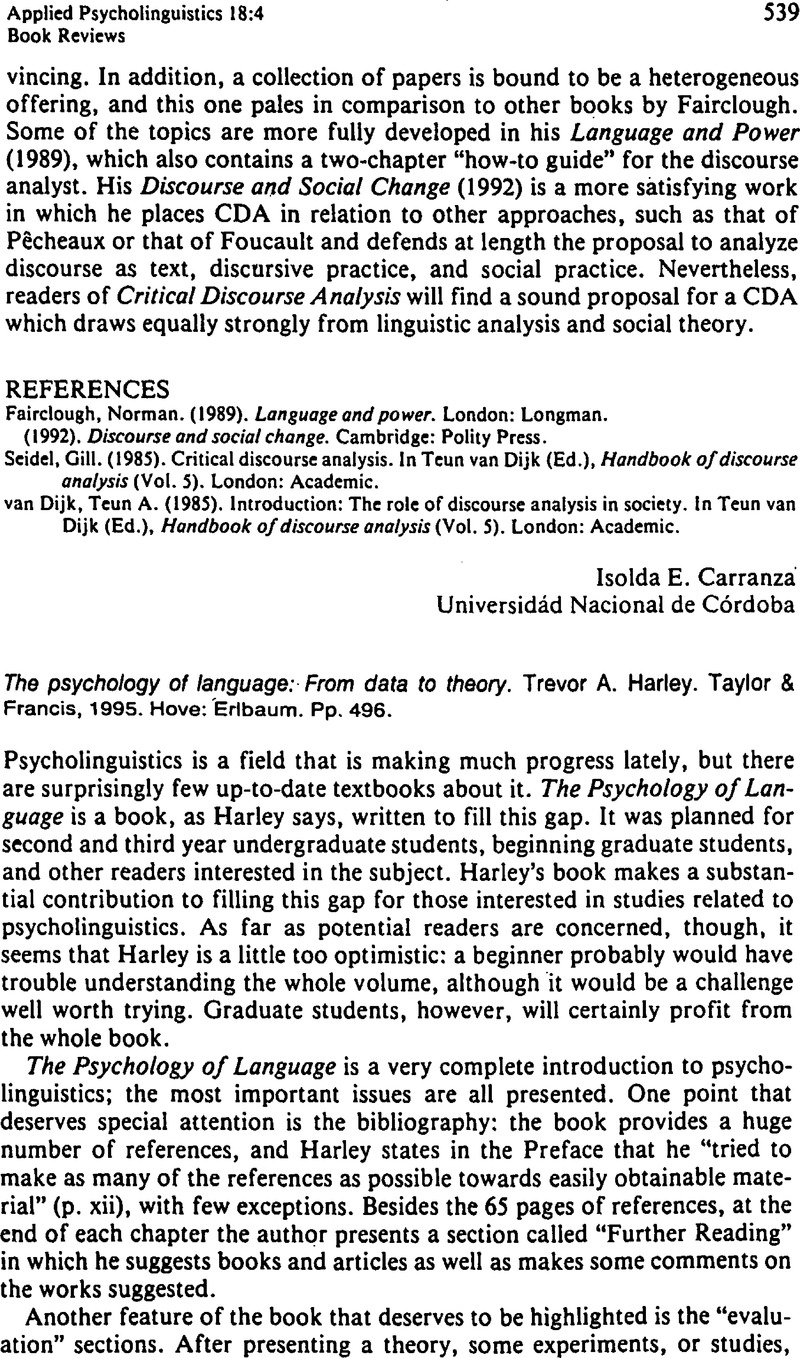No CrossRef data available.
Article contents
The psychology of language: From data to theory. Trevor A. Harley. Taylor & Francis, 1995. Hove: Erlbaum. Pp. 496.
Published online by Cambridge University Press: 28 November 2008
Abstract
An abstract is not available for this content so a preview has been provided. Please use the Get access link above for information on how to access this content.

- Type
- Book Reviews
- Information
- Copyright
- Copyright © Cambridge University Press 1997
References
REFERENCES
Coltheart, M., & Rastle, K. (1994). Serial processing in reading aloud: Evidence for dual-route models of reading. Journal of Experimental Psychology: Human Perception and Performance, 20, 1197–1211.Google Scholar
Frazier, L., & Fodor, J. D. (1978). The sausage machine: A new two-stage parsing model. Cognition, 6, 291–325.CrossRefGoogle Scholar
Hogaboam, T. W., & Perfetti, C. A. (1975). Lexical ambiguity and sentence comprehension: The common sense effect. Journal of Verbal Learning and Verbal Behavior, 14, 265–275.CrossRefGoogle Scholar
Kintsch, W. (1988). The use of knowledge in discourse processing: A construction-integration model. Psychological Review, 95, 163–182.CrossRefGoogle Scholar
McClelland, J. L., & Rumelhart, D. E. (1981). An interactive activation model of context effects in letter perception: Part I. An account of the basic findings. Psychological Review, 88, 375–407.CrossRefGoogle Scholar
Onifer, W., & Swinney, D. A. (1981). Accessing lexical ambiguities during sentence comprehension: Effects of frequency of meaning and contextual bias. Memory and Cognition, 9, 225–236.CrossRefGoogle Scholar
Patterson, K. E., & Morton, J. (1985). From orthography to phonology: An attempt to an old interpretation. In Patterson, K. E., Marshall, J. C., & Coltheart, M. (Eds.), Surface dyslexia: Neuropsychological and cognitive studies of phonological reading (pp. 335–359). Hove: Erlbaum.Google Scholar
Rumelhart, D. E., & McClelland, J. L. (1982). An interactive activation model of context effects in letter perception: Part 2. The contextual enhancement effect and some tests and extensions of the model. Psychological Review, 89, 60–94.CrossRefGoogle ScholarPubMed
Seidenberg, M. S., & McClelland, J. L. (1989). A distributed developmental model of word recognition. Psychological Review, 96, 523–568.CrossRefGoogle ScholarPubMed


